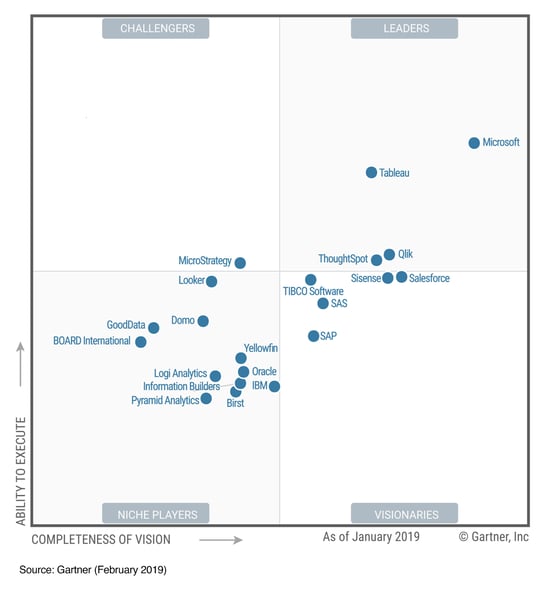Moving Digital Signage forward with Microsoft Infrastructure
In my previous article about Security, I discussed reasons why Microsoft has managed to break new barriers and grown to be one of the most valuable companies in the world.It shows the tremendous momentum of software & cloud services. Microsoft Office 365 and their Azure Platform - infrastructure and cloud services - provide a joint value still to be discovered and explored by many. We in Databeat decided to invest heavily in a conceptual change to what we believe will shape the future of digital signage; eco-system integration. Here are three reasons;
1. Privacy
Central to all systems is users and system owner should be concerned about their privacy. Users sign up, log in, provide various details about themselves and leave traces of their behavior that normally is stored in every system repository. But do all system really need to store all user data; phone number, title, business address etc? It may be practical, but repeating user data across multiple systems it is not good for privacy.
Good practice, and our preference is to add and maintain data in one single place, a principle that should apply to user data too. With advancing eco-systems, like Microsoft Office and Google G-Suite, we find these to be a perfect primary source for user data. Microsoft and Google have high quality technology, routines and processes for authentication, password security, role management and data storage and offers excellent services for other software vendors to authenticate and integrate. Using these services reduces total user management administration, increase security, quality and user satisfaction.
Why should other software vendors even risk storing user data? If we do not store user names, passwords, addresses, phone numbers and credit card details or any other information of value to malicious hackers our data is less valuable to them. They can't steal something we don't have.
Not only does Microsoft and Google have systems, competence and capacity to protect user data in an evermore hostile internet environment, where hackers of all sorts are keen to test skills; they are required to let their mullions of users decide what information to share and what not to share, and they are constantly under intense scrutiny to provide secure and stable services, so in this sense, we can trust them.
2. Collaboration
Another development of future impact for digital signage is that of information sharing, collaboration, and required tools and processes to do so. We genuinely believe that freestanding phone calls, texts, meetings, e-mails, spreadsheets and other documents will serve a much better purpose if they are linked by new and fast growing collaboration tools and processes, such as Microsoft Teams, SharePoint, Flow, and others.
We see that an increasingly growing number of customers are using their digital signage systems not with one or two centralized users as before, but many. Screen communication is about to become an integral part of business collaboration and information sharing, it can also be used to reach out to employees with no daily access to computers. To stay current, Digital Signage vendors should integrate and harness the power of clever collaboration tools seamlessly to become integral parts of their customers business processes.
3. Business Intelligence
My tech weak-spot was always Business Intelligence, I simply love the few good numbers with which one can measure performance and development, good or bad. But identifying these few numbers, and to ensure that they are relevant and represent the truth is indeed complicated. It requires business and technical expertise as well as brilliant tools to identify, extract and present these numbers.
Should these tools be digital signage tools? Absolutely not. We believe in integration, not at the application level, but at the infrastructure level. We have done this by integrating login, authentication and user management processes with Office 365 (and soon Google G-Suite) for reasons already mentioned, but equally significant is that this also gives our users access to the wealth of information and tools now available.
One interesting example is Microsoft Power BI - a Gartner Group magic Quadrant leader. Here the top right position is "the best", where completeness of vision and ability to execute are the two determining factors.
 With Power BI users has a world-class tool to find, select, extract, calculate and present key values and graphs and publish Power BI dashboards or tiles to Office 365 user groups at their own discretion. Refreshed data is available to all relevant screens automatically and immediately. With our Office 365 infrastructure integration we can easily harness the power and flexibility of all this.
With Power BI users has a world-class tool to find, select, extract, calculate and present key values and graphs and publish Power BI dashboards or tiles to Office 365 user groups at their own discretion. Refreshed data is available to all relevant screens automatically and immediately. With our Office 365 infrastructure integration we can easily harness the power and flexibility of all this.
As the leader of Office tools (Word, Excel, PowerPoint, PowerBI, etc) we believe that Microsoft infrastructure integration - in particular- is key to the future of digital signage. We do look forward to more 3rd party vendors (ie other BI tools, collaboration, and presentation tools, etc) making this integration. It will enable their content to be published much easier to screens efficiently.
They can focus on doing their tool excellent and digital signage vendors can focus on the publishing and operational part of displaying the content in time and place.
DatabeatOMNI Office 365 signup can be tested from our website or from the Microsoft Azure Marketplace.






.png)